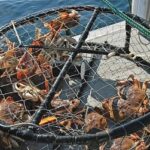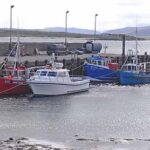Tag Archives: Pesticides
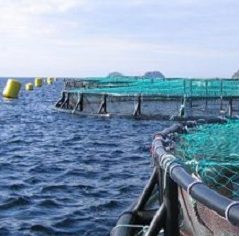
A history of toxic chemicals in the fish farming industry
When fish farms first appeared on the coast in the late 1970s, they seemed like an interesting idea. They could provide food, meet consumer demand, and perhaps alleviate the stress on wild stocks.,, Atlantic salmon and Norwegian owners became the new face of fish farms. The salmon are densely packed into the net pens, moving among their own faeces, fish pellets, and chemicals that are regularly dumped into the pens to deter the prevalent bacteria and sea lice that these conditions give rise to.,, “Many of the pesticides, insecticides and fungicides used by salmon farmers are derived from the Second World War’s chemical weapons programs,” writes Don Staniford in A Stain upon the Sea. These chemicals, used internationally, have poisoned the land via commercial agriculture, but were never intended to be dumped into the sea via aquaculture. >click to read< 09’10
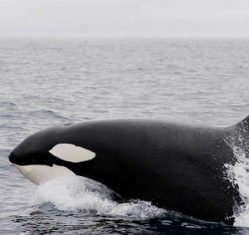
Seattle’s industrial waterfront remains a contamination challenge for orcas. What about Salmon?!
The Southern Resident orcas are often called some of the most contaminated marine mammals on earth. Their fat is filled with toxins like PCBs. When they don’t have enough to eat, they metabolize their fat and that poison ends up in their blood. Though outlawed decades ago, PCBs still remain in the sediment around Elliott Bay.,,, A lot of the toxic contamination issues that we have with our salmon can really be traced to the fact that the state of Washington is not enforcing the Clean Water Act to the extent that they should,” >click to read< Meanwhile, New study finds river wildlife contain cocaine, pharmaceuticals and pesticides in UK->click to read<10:07
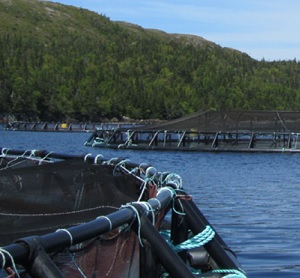
New Brunswick officials suspected pesticide use near lobster pens
An email exchange between employees of Northern Harvest Sea Farms and New Brunswick environment officials reveals the tensions at play last summer and fall during sea lice outbreaks in the Bay of Fundy. The documents — obtained by CBC News through a right-to-information request — surround attempts by the salmon aquaculture company to apply pesticides to its salmon cages in Campobello Island’s Head Harbour. Pesticides can be fatal to lobster, and the salmon farm is near lobster-holding facilities maintained by local fishermen. >click to read<10:19
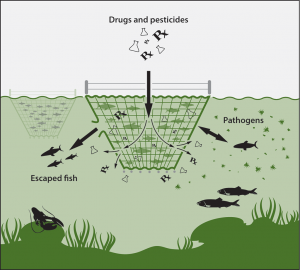
Pesticides Contaminate Fish Farms, Lawsuit in Canada moves forward
Northern Harvest Sea Farms, an ocean-based fish farm in New Brunswick, Canada, was scheduled to appear in court yesterday to answer legal charges stemming from the off-label use of an unnamed pesticide added to its operations to combat severe sea lice outbreaks. The company holds nine licenses for farmed Atlantic salmon cages on the Bay of Fundy, as well as for fish farms off the Newfoundland coast. Sea lice outbreaks are a common at over-crowded, ocean-based fish farms because such facilities afford the optimum conditions for rapidly reproducing and spreading lice. In response, some companies have turned to using illegal and off-label pesticide applications to stave off the problem, which causes huge farmed salmon kills.>click to read< 09:37
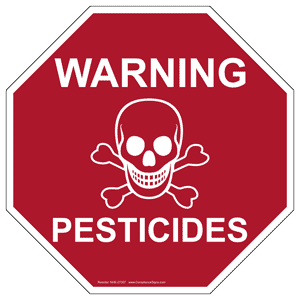
US review shows pesticides harm threatened salmon, whales
Federal scientists have determined that a family of widely used pesticides poses a threat to dozens of endangered and threatened species, including Pacific salmon, Atlantic sturgeon and Puget Sound orcas. The National Marine Fisheries Service issued its new biological opinion on three organophosphate pesticides — chlorpyrifos, diazinon and malathion — after a yearslong court fight by environmental groups. >click here to read< 19:58 
Conn. lobster die-off: no link found to pesticides
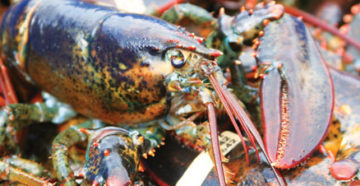 Connecticut researchers found no pesticides in lobsters collected in Long Island Sound in late 2014, a new study has found, boosting evidence that warming water temperatures are the main culprit in a huge crustacean decline that has decimated the local lobster industry. The findings raise questions about restrictions Connecticut passed in 2013, amid concern over declining lobster stocks, limiting coastal use of pesticides that can control mosquito populations that transmit diseases, including the West Nile and Zika viruses. Michael Grimshaw, a Stonington lobsterman, said Friday that he was skeptical of the new study’s findings. He believes pesticides sprayed on land that drained into Long Island Sound contributed to massive lobster die-offs in Long Island Sound in the late 1990s. He expressed worries that removing restrictions on pesticides would cause more die-offs. Read the rest here 19:21
Connecticut researchers found no pesticides in lobsters collected in Long Island Sound in late 2014, a new study has found, boosting evidence that warming water temperatures are the main culprit in a huge crustacean decline that has decimated the local lobster industry. The findings raise questions about restrictions Connecticut passed in 2013, amid concern over declining lobster stocks, limiting coastal use of pesticides that can control mosquito populations that transmit diseases, including the West Nile and Zika viruses. Michael Grimshaw, a Stonington lobsterman, said Friday that he was skeptical of the new study’s findings. He believes pesticides sprayed on land that drained into Long Island Sound contributed to massive lobster die-offs in Long Island Sound in the late 1990s. He expressed worries that removing restrictions on pesticides would cause more die-offs. Read the rest here 19:21
Southern New England Fishermen try to preserve the lobster industry
 Lobster fishermen packed a hearing at the Department of Energy and Environmental Protection headquarters on Friday, and said pesticides in the sound and predators like black sea bass are killing the crustaceans. “New York will not resolve their and the fishermen are taking a blunt,” said Roger Frate, a fisherman from Darien. Marine experts and scientists with the Atlantic States Marine Fisheries Commission’s Southern New England Lobster Subcommittee considering potential management tools to help preserve the species, such as moratoriums and trap limits. Read the rest here 09:47
Lobster fishermen packed a hearing at the Department of Energy and Environmental Protection headquarters on Friday, and said pesticides in the sound and predators like black sea bass are killing the crustaceans. “New York will not resolve their and the fishermen are taking a blunt,” said Roger Frate, a fisherman from Darien. Marine experts and scientists with the Atlantic States Marine Fisheries Commission’s Southern New England Lobster Subcommittee considering potential management tools to help preserve the species, such as moratoriums and trap limits. Read the rest here 09:47
Roger Frate of Darien has a simple answer to improving the lobster stock in Long Island Sound.
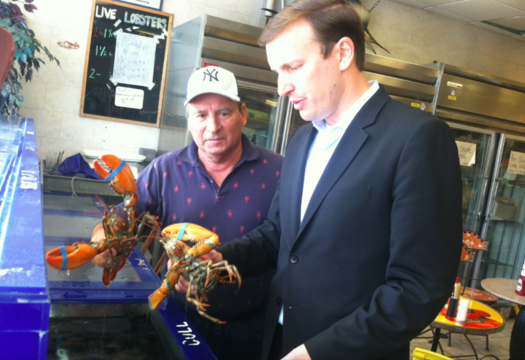 Frate said it was pesticide used to combat the West Nile Virus in 1998 and 1999 that decimated the Sound’s lobster population and sent it into a tailspin from which it has yet to recover. Connecticut banned the use of some pesticides, but New York hasn’t, he said. But Carlo said he’s noticed a rebound in the number of lobsters. “The lobsters right now are looking nice and healthy,” he said. “There’s been a huge improvement since 2012.” However, Frate said fishermen still believe pesticides are harming lobsters. Read the rest here 12:20
Frate said it was pesticide used to combat the West Nile Virus in 1998 and 1999 that decimated the Sound’s lobster population and sent it into a tailspin from which it has yet to recover. Connecticut banned the use of some pesticides, but New York hasn’t, he said. But Carlo said he’s noticed a rebound in the number of lobsters. “The lobsters right now are looking nice and healthy,” he said. “There’s been a huge improvement since 2012.” However, Frate said fishermen still believe pesticides are harming lobsters. Read the rest here 12:20






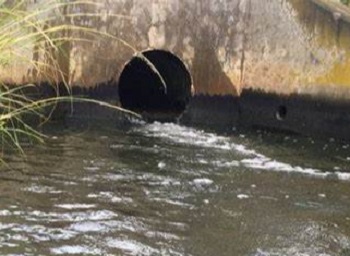
 When friends of mine recently got norovirus from eating foraged Gulf Island oysters, my first instinct was a strange one. I blamed Victoria. More specifically, I blamed Victoria’s raw sewage, which is pumped out to the Juan de Fuca Strait at a rate of 130 million litres per day. British Columbia’s capital is one of the last major cities north of San Diego to dump all of its untreated waste (including pesticides, street runoff and pharmaceuticals) into the ocean.
When friends of mine recently got norovirus from eating foraged Gulf Island oysters, my first instinct was a strange one. I blamed Victoria. More specifically, I blamed Victoria’s raw sewage, which is pumped out to the Juan de Fuca Strait at a rate of 130 million litres per day. British Columbia’s capital is one of the last major cities north of San Diego to dump all of its untreated waste (including pesticides, street runoff and pharmaceuticals) into the ocean. 



























